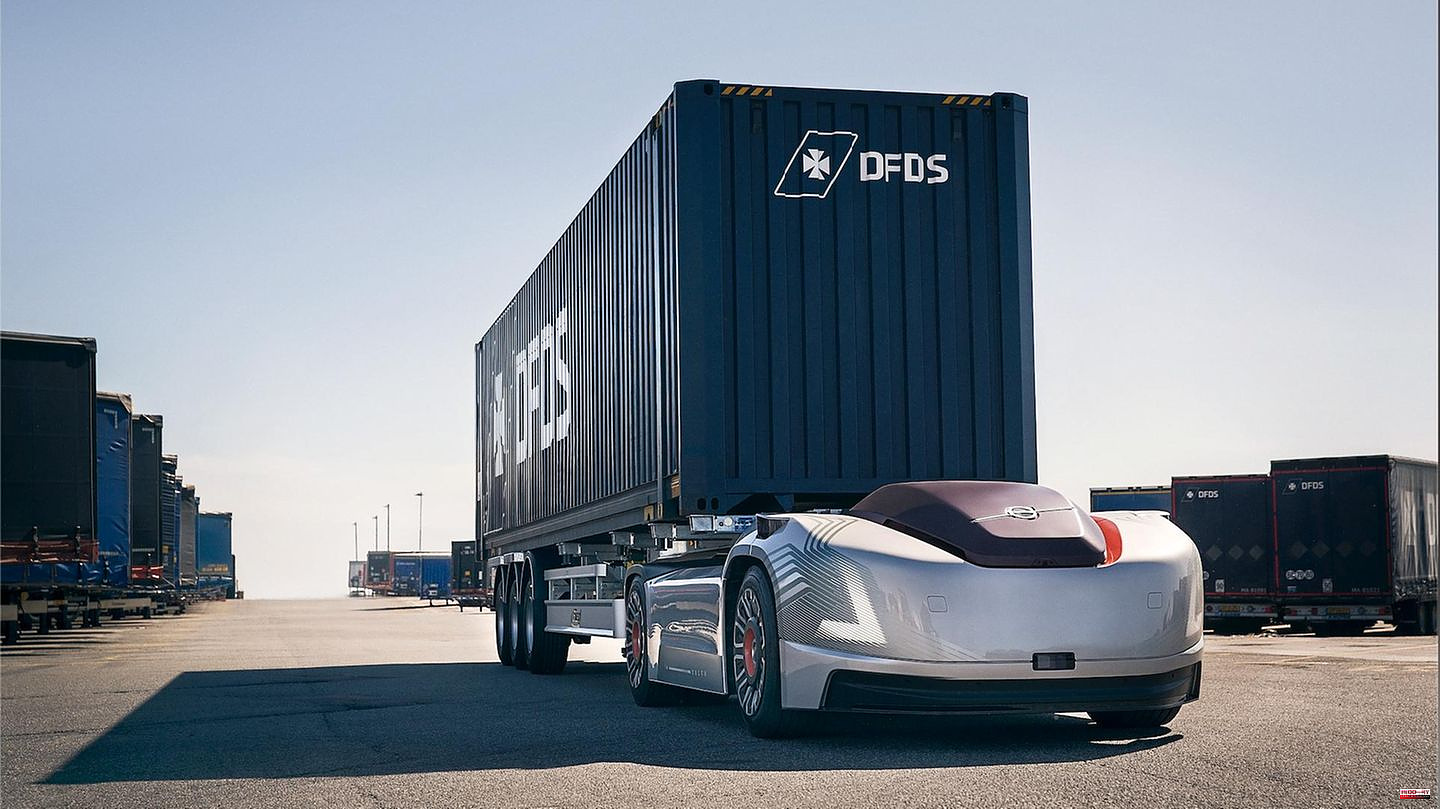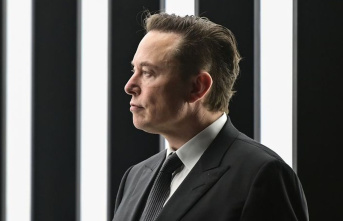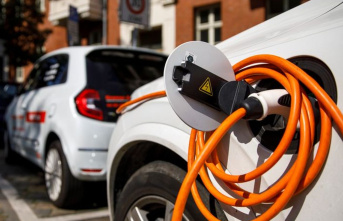Mr. Fintl, autonomous driving was hotly debated when the Google car was presented 12 years ago. It was imagined that a car without a steering wheel and driver could be on the road all by itself - for example driving the children to school. What we have now are driving assistants that allow you to take your hand off the steering wheel on the freeway.
Admittedly, this looks a bit sobering at first glance. But the introduction of this car and Tesla's full-bodied promises started a revolution. Even if the project has now turned out to be much more complex, the first series-ready products are now beginning to reach customers. The much-cited Autobahnpilot is an example here.
The e-car has arrived in everyday life, but autonomous driving is not visible in our everyday life.
You have to look closely at how autonomy manifests itself. We have the well-known level system, starting from L0 - driver is fully responsible - up to L5 - vehicle acts completely autonomously in all environments. It's great that Germany has managed to create a reasonable, legal framework for this. Automated driving will not come overnight. It is an evolutionary process. Assistance functions such as lane and distance maintenance as well as emergency brake assistants are now popular equipment features and are sometimes even required by law. Let's stay with the keyword "legal framework". The legislature complex was initially underestimated. Building a safe and reliable legal framework has taken years. However, Germany is a pioneer here and began to introduce corresponding laws last year.
That has to be mentioned as well. People also like to complain about Berlin, but we're way ahead here.
Exactly, with worldwide role model effect. The Chinese followed suit in mid-August. Legislation has so far been a question mark in Beijing's "Big Picture" of autonomous driving. But apparently the Bundestag papers were studied in detail and served as inspiration for local legislation. German laws in this area were also exemplary for France and Japan. Local manufacturers are absolutely competitive when it comes to making the leap from technology demos to usable practical functions. The first licensed Autobahn pilot came from Germany.
But that's a long way from the situation of "I'll send the car and it will pick up the children on its own".
In fact, the vision of the Google car - equal to level 5, fully autonomous in one step - has turned out to be too ambitious. However, that does not mean that the vision has failed. Instead, attempts are now being made to implement individual usage scenarios – such as freeway journeys or shuttle services within a defined area. You are quite successful with that. The direction towards fully automated driving is still correct and is being pursued. However, this is done in increments and not in one big leap.
The Baidu taxi was recently introduced in China, which comes pretty close to the vision.
China is pursuing automated driving technology with great vigour. There are a handful of companies that have self-driving technology and have applied for or redeemed licenses for commercial passenger transportation. Until recently, most of these automated vehicles in the pilot applications had a safety driver on board – especially in metropolitan areas such as Wuhan, Shenzhen, Shanghai and Beijing. But now we are experiencing a real breakthrough. The technology has advanced to the point where there is no longer a need for a safety driver. In addition, commercial operation was approved - in regular Chinese traffic.
So there is no longer a safety driver and no steering wheel. Baidu claims to be able to make this good-looking taxi for just over $40,000. Including all the technology required for autonomous driving.
What we're seeing here technologically is absolutely groundbreaking. However, the financial affordability of such systems is a very important point. The price decides. The commercialization of pilot projects costing millions must now succeed. I see two ways to do this: Use in taxis and in the premium sector. In the future, the technology will become significantly cheaper, so Baidu's announcement is not entirely unrealistic. This is where economies of scale come into play, but also the simplification of systems, for example in the area of lidar sensors. I am sure that autonomous driving will be available as a subscription version. This means that monthly fees are added to the possibly low purchase costs.
These are currently expensive features for customers – but a fully autonomous shuttle at a price of 30,000 to 35,000 euros would also be tempting for private customers. We are a long way from that today.
The announcement of Baidu can also be seen in perspective today! The model is not available for pickup in the store. In fact, at the beginning the target group had a very strong focus on the solvent private owner who would like to afford something like this. As with the Tesla Model S. It is now becoming apparent that other applications are probably better suited to commercialization: these are commercial freight and passenger transport.
Understandable. Privately, autonomy creates more convenience, in business, on the other hand, there are no wage costs. The investment pays off in a completely different way.
A look at the actual usage time of a car provides clarity: A private car usually just stands around, in Germany an average of 23 hours a day. Such an e-taxi can be in use around the clock, except for the charging time. In the foreseeable future it will primarily be about commercial traffic. This is how money is earned - whether in freight or passenger transport, people are a significant cost factor there and there is also a blatant shortage of drivers with no end in sight.
In China, we've reached that point with taxis, when will I see something like this here?
The Chinese manufacturers assume that they will be able to roll out commercial taxi operations on a large scale in the megacities in the next two to three years. That would mean the step into mass production. The Chinese government attaches great importance to this entire "automated mobility" sector. This is firmly anchored in the "Made in China 2025" industrial strategy, so not only political goodwill flows into the planning, but also tangible investments. That means not only developing the software, but also mastering and manufacturing the sensors in China.
Let's go briefly to chips and semiconductors. Is China able to manufacture these key components itself? After all, autonomous cars require enormous computing power.
With the "two circuits" strategy, President Xi Jinping has ordered technological autonomy. China has made tremendous strides in the field of high-performance processors and AI accelerators. But China's success in this area is still based on Western know-how. The technology ban on the part of the USA is having an effect. Many things that are needed to develop high-performance chips can no longer be exported to China, such as design software or machines to produce chips with structure widths of less than 7 nanometers. We are currently seeing a dramatic escalation in this dispute. The US sanctions cooperation with Chinese chip companies. Existing technologies are now also affected, and the trade rifts are not diminishing at the moment.
Is that keeping China out permanently?
In the short term, the US trade restrictions, especially the recent package in October, are sure to be a major blow to the chip industry in China. At the same time, one has to acknowledge that their progress can only be slowed down – but not stopped: Shanghai Micro, for example, is one of the largest chip manufacturers in China. Despite the trade restrictions, the company has managed to manufacture the first chips using a 7-nanometer process. Something that was hardly considered possible with the existing machine park.
That is roughly the technical level at which we operate in the EU.
That is actually even above the level that we can currently produce here in Europe in terms of structure widths. However, that's two or three generations behind the latest development in the US, Taiwan and Korea. After the ban, the Chinese managed to recruit the right specialists with a lot of money. With a great deal of effort, it was possible in China to open the door to the current high-tech processor generation.
The US wants to keep Beijing at bay. We'll see if that works. Back to autonomous cars. What to expect in Europe In terms of price and time.
Automakers woke up and did their homework. If you look at partial autonomy, the old world is currently ahead from the customer's point of view. Think of Mercedes, who brought autopilot to the streets. It's not about presenting a demonstrator, but about developing a technology that you can hand over to the customer with a clear conscience. Tesla has experienced how tedious it can be to put a crisp marketing idea into practice.
Now that the legal rules are in place, we will see the Autobahn pilot in Europe at 120 to 130 km/h as early as next year. This is absolutely useful. In 2025 it will be possible to start automating urban traffic. We're talking about Level 4 systems in which manual intervention, whether by the driver or teleoperator, is only necessary in exceptional cases. In its operating environment, the vehicle drives independently.
Well, in China, in huge cities, you already have taxis without a steering wheel and without a driver, and here in 2025, the delivery truck driver can play on the mobile phone while driving. As I understand it, China is clearly ahead. The crucial question is, does a driver have to be there?
Of course, the entire automated operation only makes sense if the driver is completely eliminated in the medium term. This fully automated operation is currently still limited to certain environments. In China, too, the robot taxis do not leave the urban area of operation. Exceptional situations are solved by "remote control" with the help of a real pilot. The confidence of the passengers in the technology also plays a role. Today, many people - especially in the West - still have a lack of trust in autonomous vehicles. Security is a top priority in Germany in particular. Even if the industry seems a bit slower as a result, this approach makes sense in the medium term.
What is currently the biggest challenge for autonomy in traffic?
In addition to the general complexity of road traffic, the interaction of the automated systems with manually controlled vehicles poses a major challenge. The published accident statistics for automated vehicles show that the automatic system works surprisingly well. More serious accidents, such as airbag deployment, occur almost exclusively when manually controlled vehicles are involved. For example in rear-end collisions. The systems strictly adhere to traffic regulations. This is all too often different for human road users.
What happens if an absolutely exceptional situation occurs? A blocked road or an ambulance call?
This is simply very difficult for a computer because it has to communicate with other road users. In such situations, it is currently better if the vehicle then hands over to a remote control center.
The driver for the rare emergency is no longer in the car, he is switched on.
We are already seeing this in demonstration vehicles or in pilot tests. Trucks without cabs will certainly be seen more often in freight transport. These systems could get approval in a year or two.
Such a truck would drive fully autonomously on the autobahn without a driver and only when it becomes necessary does the "driver" take over?
Exactly. This makes it possible to handle the necessary freight transport on the road more safely, more sustainably and more economically. In this industry, the problem of "driver shortage" has been pressing for years.
Looking at China – what do German customers have to be prepared for?
The Chinese manufacturers are currently on everyone's lips. Whether fleet customers like Sixt, who recently announced a major purchase from BYD, or the retail plans of newcomers from the Far East: Chinese vehicles will be part of the street scene in a few years. Taxi services, goods transport, motorway assistants - all of this can and will be state-of-the-art. By 2025, the floodgates for the conversion of the mobility system will be opened in Europe. China is a pioneer here in some respects, and German manufacturers will undoubtedly be able to play a major role.







